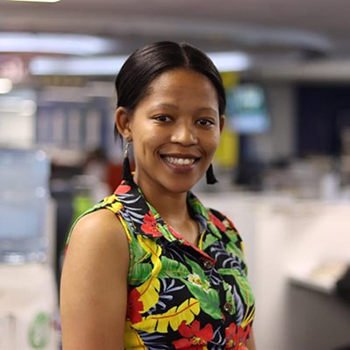Passion for journalism spans decades
During the award ceremony on 15 October 2020, Jaffer received the prestigious Allan Kirkland Soga Lifetime Achievement Award, which recognises a sustained and extraordinary contribution to journalism. Jaffer said she never chose journalism, but journalism chose her. She said when she first stepped into a newsroom looking for a holiday job in the 1970s, she did not know she had stepped into her future in news reporting. Since then, Jaffer has earned many accolades in the journalism industry as well as in academia. She also became an acclaimed author, and wrote her third book, Beauty of the Heart: The Life and Times of Charlotte Mannya Maxeke, during her time as a writer-in-residence at the UFS. While at the UFS, she founded the online media platform,
The Journalist, a platform that provides history and context for key issues facing South African journalists. This portal also links students with academics across the country and will soon be extended to the African continent and the diaspora.
Jaffer said she felt blessed to be recognised among the many journalism pioneers in South Africa.
“It’s extremely wonderful because it came so out of the blue. This year, with COVID-19, I was digging deep, and trying my best to keep focus. I’m very thankful. It’s made me pause, reflect, and realise that a lot of things I’ve done have been of value. When living your life, it’s not that you’re aware of that all the time. There are many people doing great things who don’t always get this kind of recognition,” Jaffer said.
Still a great need for journalists in South Africa
Talking about journalism today, Jaffer said: “I am often overwhelmed to witness the enthusiasm and determination of young journalists across the country who come from humble backgrounds and inspire those around them. Our country is gripped in a bipolar condition. It is not clear how the healing will come, but it will. The challenge is to keep our minds in balance so that we can be strong enough to root out corruption and gender-based violence, while at the same time fully understanding our blessings as a people.”
UFS alumna Rising Star in Journalism
In another accolade for the UFS, the Upcoming/Rising Star of the Year award went to former UFS Journalism student Brümilda Swartbooi for her article titled ‘Sy het hard vir ons gewerk’. The article highlighted the senseless killing of a woman outside her workplace, minutes after her husband dropped her off.

Brümilda Swartbooi. Photo: Supplied